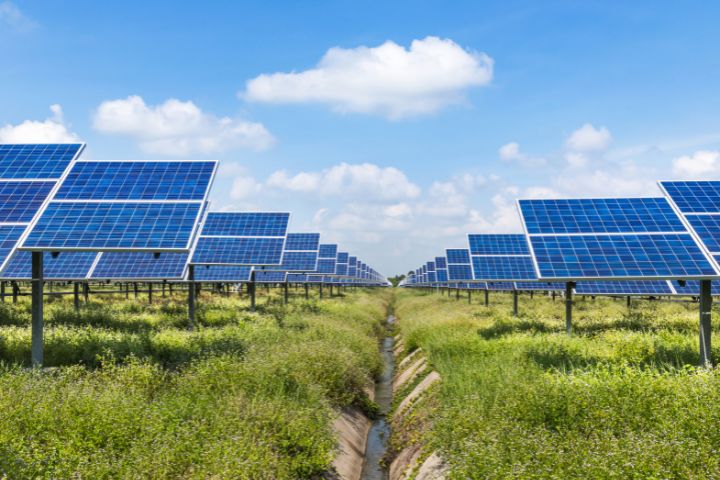Eliminating the Tradeoffs Between Farming and Solar Energy Development

Solar photovoltaic technology is experiencing explosive growth to meet current and future energy needs. But solar energy production requires more land than comparable fossil fuel energy production. As the demand for solar increases, so will the demand for land. Unless farming and energy production can occur simultaneously, agriculturally valuable land could be in jeopardy. While combined “agrivoltaic” development is possible, research shows that conventional opaque solar arrays installed on farmland often decrease crop yields.
A newly-awarded sustainability “catalyst grant” from the University of Michigan’s Graham Sustainability Institute will support a transformative concept of land-use sharing between solar power generation and agriculture that removes compromises where one use negatively impacts the other.
The research will focus on Michigan crops that are economically important, providing a framework that can be expanded to other types of crops, climate zones, and land use. By combining expertise in crop growth and ecosystem health with new semi-transparent solar cell technology developed by the researchers, the team aims to develop new products for specific agricultural applications adapted to the regions in which they are applied.
This project represents the first demonstration of the new technology in an open-field agricultural setting (U-M’s Campus Farm). If successful, this simultaneous dual use of land could provide income from both the crops grown and the electricity produced, making local agriculture more profitable in temperate climate zones and in underdeveloped countries while providing abundant, clean electricity. The outcomes impact a wide range of end-users in this emerging, interdisciplinary and intersectional field, including agrivoltaic system providers, farmers, photovoltaic, glass, chemical, and greenhouse industries, and is expected to lead to follow-on funding from the DOE Solar Energy Technologies Office.
Project team: Stephen Forrest, PI, Peter A. Franken Distinguished University Professor of Electrical Engineering, Paul G. Goebel Professor of Engineering (Electrical Engineering and Computer Science | Materials Science and Engineering); Jeremy Moghtader, Co-I, Program Manager (Matthaei Botanical Gardens and Nichols Arboretum); Rachel Koltun, Co-I, Research Engineer (Electrical Engineering and Computer Science)
 MENU
MENU 
